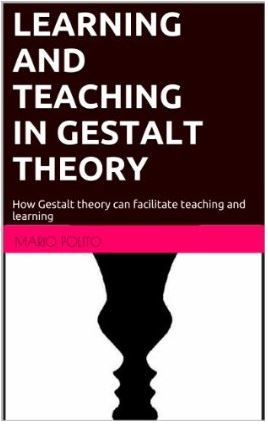LEARNING AND TEACHING IN GESTALT THEORY:
How Gestalt Theory can facilitate teaching and learning
How Gestalt theory can facilitate teaching and learning
processes
There is nothing more practical than a good theory, Kurt LEWIN said. Gestalt theory is a good theory that could facilitate the learning and teaching processes and renew both educational relationship and didactics.
Amplifying the contributions of Gestalt psychology (W. KÖHLER, M. WERTHEIMER, K. KOFFKA, W. METZGER, G. KATONA, K. LEWIN) and those of Gestalt therapy (F.S. PERLS, R.F. HEFFERLINE, P. GOODMAN, 1951) it is possible to elaborate a Gestalt Psychopedagogy. From the application of Gestalt theory to the clinical field there could be a fruitful transfer to the educational field. Various attempts have been made for such a transfer (e.g. FUHR, BROWN, V. OAKLANDER), but were limited to transferring some selected fundamental themes of Gestalt therapy like the contact cycle, personal and authentic communication, the here and now principle, and some techniques of Gestalt therapy, like the well known 'dialogue with the empty chair'. In other words, Gestalt was applied to teaching, without theoretically considering or reframing it in a coherent way, without elaborating an adequate pedagogical remodelling of what Gestalt therapy theory and practice can contribute in the pedagogical field.
This lecture aims to demonstrate that it is possible to proceed toward a theoretical revision of the gestaltic perspective in order to create the basis of a coherent Gestalt Psychopedagogy by integrating the contributions of Gestalt psychology with the contributions of Gestalt therapy. Gestalt therapy perspective applied to teaching is often charged with theoretical superficiality because it neglects the theme of learning contents, because it distorts the class group transforming it into a psychotherapeutic group, because it underestimates performance in learning contents and it overestimates the relationship and communication: a beautiful climate is created in the classroom but nothing is learned. Because of this frame, which puts aside Gestalt theory on perception, intelligence, memory, creativity, insight, problem solving, the strength of Gestalt theory was decreased and reduced to a nice humanistic technique centered on authentic and personal communication.
In managing all theoretical Gestalt contributions, both from the Gestalt psychology side and the Gestalt therapy side, it is easier to expand them in a psychopedagogical perspective. Some contributions that we could apply immediately to education include: the theory of the organism-environment-field, learning as a creative adaptation, learning and teaching as experiences of contact, group dynamics according to the field theory of K. LEWIN, the laws of gestaltic organization (figure-background effect, VON RESTORFF effect, the tendency to the completion, the good continuation, the good form, the pregnancy, remodelling and problem solving, insight, productive thought (M. WERTHEIMER), memory as rearrangement (G. KATONA). The integration of Gestalt psychology and Gestalt therapy can produce a new theory, that we could call Gestalt Psychopedagogy, a theory that takes an interest in the specific way of teaching and learning processes and of educational relationship. The main objective is to make finally possible learning as a real experience, an authentic experience of contact with the environment and with others, an experience of creativeness and of 'formation'.
To demonstrate how this psychopedagogical theory of Gestalt could be developed in practice, this lecture examines and discusses eight key concepts:
1. Creative adaptation as a value and objective of the education itself.
2. Learning in the Organism-Environment Field.
3. The need for learning.
4. Insight and learning.
5. The classroom group as a resource for learning together.
6. The laws of gestaltic organization applied to didactics.
7. Knowledge as remodelling and rebuilding.
8. Priority of educational relationship over didactics.
Gestalt theory is focused on the experience of contact that occurs in the here and now. It considers with interest the life space of teachers as well as students. It takes interest in the complexity of experience, without neglecting anything, but accepting and amplifying all that emerges. The fundamental objective of this approach is the creative adaptation of each individual within the Organism-Environment Field. In the gestaltic perspective the organismic needs of man, the authentic needs of autorealization, are respected. It stimulates learning as experience and the experience as a source of learning. It appreciates the affections and meaning that we attribute to what we learn. Knowledge is conceived as a continuous organisation and rearrangement of information according to needs, purposes and meanings. It asserts that learning is not accumulation, but remodelling or insight. Autonomy and freedom of the student is stimulated by the teacher. The time necessary for assimilation and for cognitive and existential remodelling is respected. Didactic contents are proposed not for being introjected or swallowed but for having them chewed, destructured and assimilated. The contact experience between teachers and students is given value: an authentic meeting based on sharing ideas and affections.

